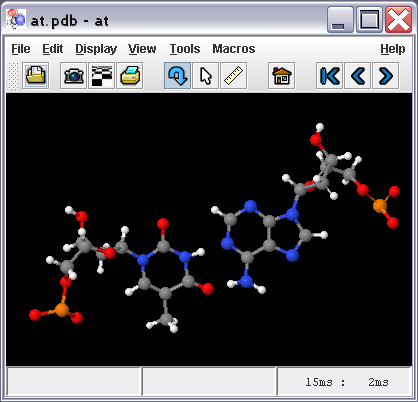Difference between revisions of "Jmol Application"
Jump to navigation
Jump to search
AngelHerraez (talk | contribs) (→Starting Jmol Application) |
AngelHerraez (talk | contribs) (→Starting Jmol Application) |
||
| Line 16: | Line 16: | ||
* Click on a previously created Start menu entry (Windows terminology) ([[Support/Windows|HowTo]]). | * Click on a previously created Start menu entry (Windows terminology) ([[Support/Windows|HowTo]]). | ||
* Execute one of the [[Files_Description#jmol|batch files/shell scripts]] that are part of Jmol distribution (Windows, MacOS, Linux, Unix). | * Execute one of the [[Files_Description#jmol|batch files/shell scripts]] that are part of Jmol distribution (Windows, MacOS, Linux, Unix). | ||
| − | * From the command line: <code>java -jar Jmol.jar</code> (of course, issued from the folder/directory where Jmol.jar is, or else pointing to it with a full path). | + | * From the command line: <code>java -jar Jmol.jar</code> (of course, issued from the folder/directory where Jmol.jar is, or else pointing to it with a full path). See options below. |
* Double-click on a molecular coordinates file whose extension has been previously associated to Jmol ([[Support/Windows|HowTo]]). | * Double-click on a molecular coordinates file whose extension has been previously associated to Jmol ([[Support/Windows|HowTo]]). | ||
| + | |||
| + | === Giving Jmol more memory to work with === | ||
| + | Memory available to Jmol is determined by Java. Less or more memory can be allocated by using:<br> | ||
| + | <code>java -Xmx###m -jar Jmol.jar</code> | ||
| + | <br>where the ### must be substituted by a number in megabytes (hence the "m" after it). | ||
| + | |||
| + | Technically: | ||
| + | * -Xmx sets the maximum memory heap size. | ||
| + | * -Xms sets the minimum memory heap size. | ||
| + | Jmol default batch files and shell scripts in Jmol 10.2 are written to give -Xmx512m (512 Mb maximum). | ||
Revision as of 16:19, 9 June 2006
Jmol Application
"Jmol Application" is the version of Jmol that runs as a standalone program, in its own window, thanks to Java programming language.
Control of the molecular model is gained through several means:
- The mouse (documented in Mouse Manual).
- The application's menu and toolbar (at the top of the window), which offer
- File open, export, and print functionalities.
- A limited set of selection and rendering options, and several tools.
- The pop-up menu (context menu, right-click on the model panel), which offers most funcionality available and is identical to applet menu.
- The scripting language (same used by the applet); this is available through the File > Script... menu, which opens a "script console" or command-line environment.
Starting Jmol Application
Several ways:
- Double-click on
 Jmol.jar file.
Jmol.jar file. - Click on a previously created shortcut (Windows terminology) (HowTo).
- Click on a previously created Start menu entry (Windows terminology) (HowTo).
- Execute one of the batch files/shell scripts that are part of Jmol distribution (Windows, MacOS, Linux, Unix).
- From the command line:
java -jar Jmol.jar(of course, issued from the folder/directory where Jmol.jar is, or else pointing to it with a full path). See options below. - Double-click on a molecular coordinates file whose extension has been previously associated to Jmol (HowTo).
Giving Jmol more memory to work with
Memory available to Jmol is determined by Java. Less or more memory can be allocated by using:
java -Xmx###m -jar Jmol.jar
where the ### must be substituted by a number in megabytes (hence the "m" after it).
Technically:
- -Xmx sets the maximum memory heap size.
- -Xms sets the minimum memory heap size.
Jmol default batch files and shell scripts in Jmol 10.2 are written to give -Xmx512m (512 Mb maximum).
Contributors
AngelHerraez, EricMartz, Pimpim, Cudo29, NicolasVervelle, Green
